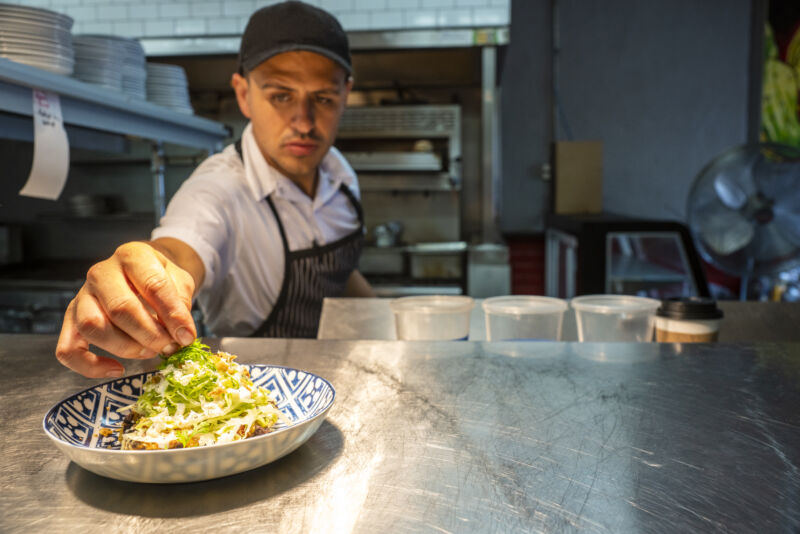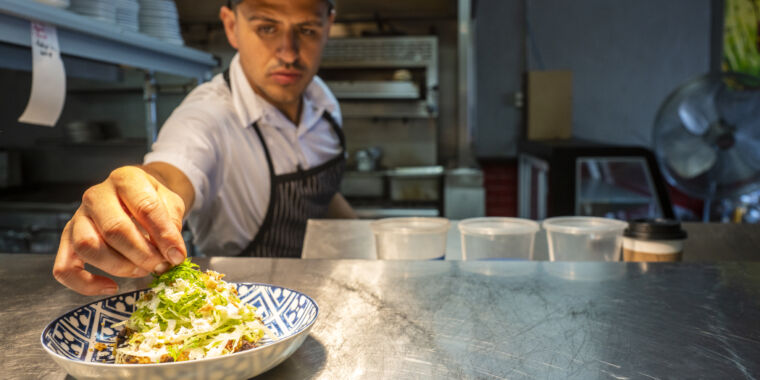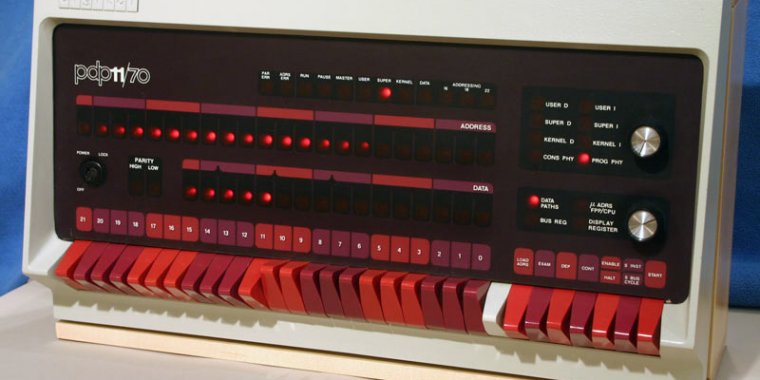
Google is being sued by a Florida restaurant group alleging that the tech company has been setting up unauthorized pages to capture food orders rather than directing them to the restaurant’s own site.
Google uses “bait-and-switch” tactics to get customers to place takeout or pickup orders through “new, unauthorized, and deceptively branded webpages,” according to the lawsuit, filed on behalf of Left Field Holdings, a restaurant company that runs Lime Fresh Mexican Grill franchises. On those pages, customers are prompted with large buttons to order with food delivery companies like GrubHub, DoorDash, or Seamless.
“Google never bothered to obtain permission from the restaurants to sell their products online,” the lawsuit says. “Google purposefully designed its websites to appear to the user to be offered, sponsored, and approved by the restaurant, when they are not—a tactic, no doubt, employed by Google to increase orders and clicks.”
In a statement to Ars, Google disputed “the mischaracterizations of our product” and said it would be defending itself against the lawsuit. “Our goal is to connect customers with restaurants they want to order food from and make it easier for them to do it through the ‘Order Online’ button,” spokesperson José Castañeda told Ars. “We provide tools for merchants to indicate whether they support online orders or prefer a specific provider, including their own ordering website. We do not receive any compensation for orders or integrations with this feature.”
Google acquisition
The “Oder Online” button appears to be the result of a Google acquisition known as “The Ordering App,” a site that was originally marketed toward restaurants. “The Ordering app is an online ordering platform, powered by Google, and designed specifically for Restaurants to help customers order more seamlessly from the Google Business Profile,” the product’s Salesforce page says. While The Ordering App was initially set up to take a percentage of sales, Google waived it “to help support restaurants affected during the COVID-19 pandemic.”
It’s not clear when The Ordering App or the “Order Online” button changed tack or if it ever did—there’s very little information about the acquisition or the product that’s public—but the lawsuit alleges that at some point Google decided to market it to food delivery companies instead of restaurants.
Before the “Order Online” button appeared, Google search result pages for restaurant queries looked like many others do—a list of organic results accompanied by text ads. Then, in 2019, Google started rolling out the new button, which appears prominently in what the company calls the Business Profile, a collection of information about a business that appears alongside search results.
When users click the “Order Online” button, they’re directed to a page that in many cases contains large links to food delivery companies, complete with their logos. The restaurant’s own site gets a link as well, though it’s a small, generic “website” button. In some cases, Google provides an interface for assembling an order, complete with prices and descriptions of the menu items. Companies that have completed the “Order Online” setup with Google can also direct customers to their own online ordering services. Yet because many restaurants’ ordering sites are run by third parties, those links may not contain a restaurant’s name. In the case of Cambridge, Massachusetts, cafe Flour Bakery, for example, the option to order directly appears as “thelevelup.com”.
If restaurants haven’t completed the setup, Google appears to create a page anyway. It’s unclear how that happens, though it’s possible that a restaurant’s appearance in a delivery app is what triggers it. That isn’t always a sign of a business relationship between the restaurant and food delivery company, though. Many food delivery companies have been sued for adding restaurants without their consent.
“Google’s ‘Order Online’ button leads to an unauthorized online storefront—one owned and controlled by Google—wherein consumers can place orders for the restaurant’s products, all under the restaurant’s tradename,” the lawsuit says. “Google prominently features the restaurant’s tradename at the top of the page, above the restaurant’s address and menu, to give the user the distinct impression that the storefront and products are authorized and sponsored by the restaurant, when they are not.”
Food delivery app fees
If the restaurant has a relationship with the food delivery company, it gets charged a fee. These fees can be so high—15 to 30 percent in many cases—that the restaurant has no hope of making a profit from the order. “A restaurant’s motivation to partner with a Delivery Provider is almost never to make a profit on orders received from the Delivery Provider,” the complaint says. “Rather, a restaurant’s usual goal is to capture new customers that may later place orders with the restaurant outside of the Delivery Providers’ expensive platforms.”
But, the lawsuit says, because of the way Google’s “Order Online” feature is designed, it limits restaurants’ chances of taking orders directly.
Given the number of restaurants in the US, the lawyers representing Left Field Holdings are seeking class action, saying they believe there are “tens of thousands” of potential plaintiffs. “Since launching its unauthorized Storefront, Google has hijacked millions of customers and orders,” the lawsuit alleges.








